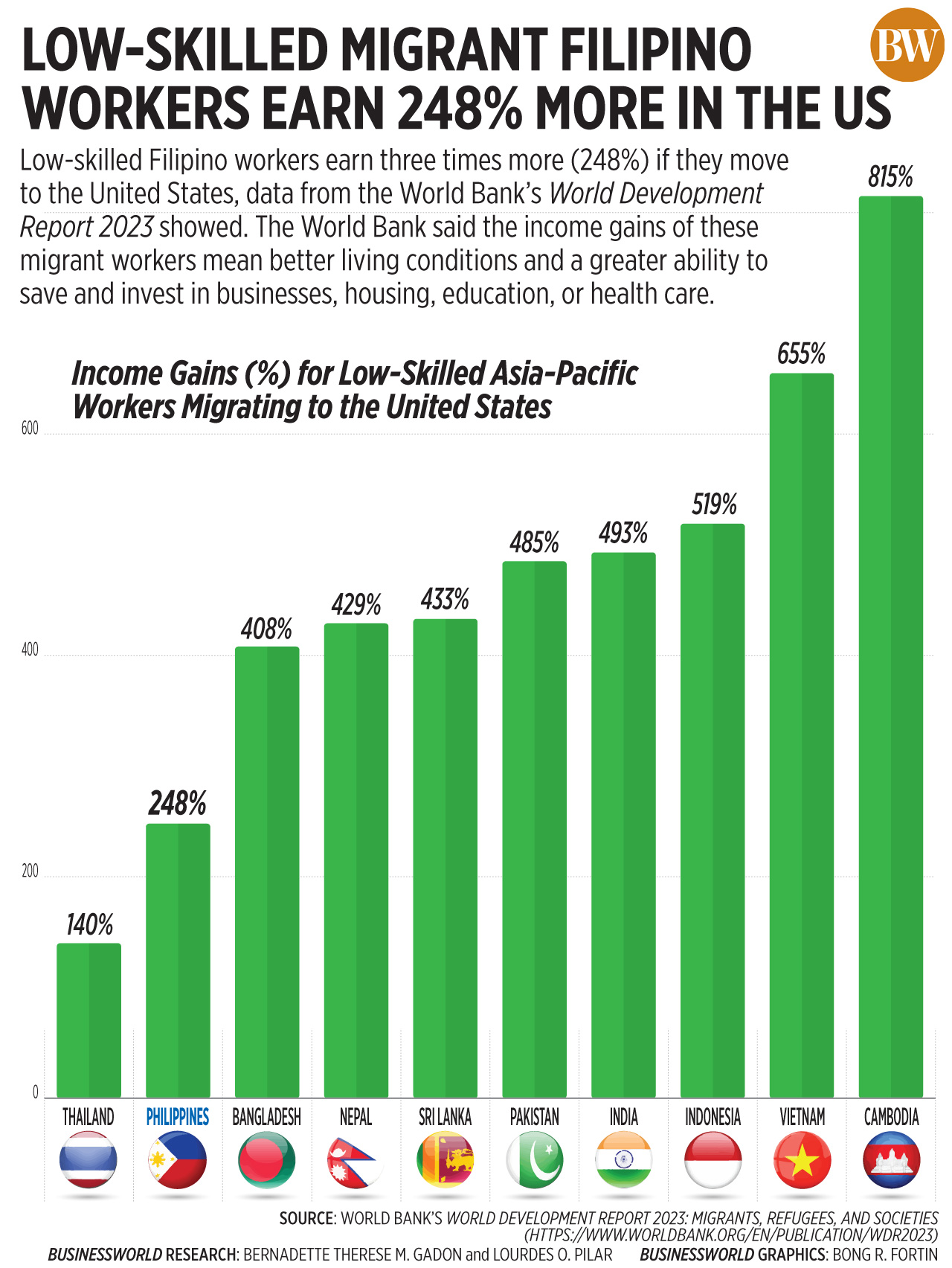MIGRATION must be viewed through the lens of capital and knowledge transfers to properly harness it for poverty reduction, the World Bank said.
“Cross-border mobility can be a powerful force for reducing poverty in origin countries. The benefits for development arise from remittances, knowledge and technology flows, higher incentives and opportunities for human capital accumulation, and more efficient allocation of labor,” it said in its latest Migrants, Refugees, and Societies report.
“In countries with relatively large numbers of current or potential labor emigrants, economic and development strategies should reflect the importance of the potential contribution of emigration to poverty reduction,” it added.
The World Bank recommended that countries make migration part of their development strategies.
“These strategies should outline specific measures the government intends to take to maximize these benefits and to mitigate negative impacts. In preparing their strategies, governments would benefit from input from the private sector, labor unions, current and would-be migrants, and the diaspora. In some cases, dedicated institutions are needed to ensure the implementation of these strategies,” it added.
The report singled out the Philippines, which has made labor migration a focus in the Philippine Development Plan (PDP) for 2023 to 2028.
“The PDP is directed at supporting returning migrants’ reentry into the economy and managing the social impacts of emigration, including by offering health and psychosocial services to migrants and their children,” it said.
“In parallel, the government set up two institutional structures to manage migration policy and regulation: the Philippine Overseas Employment Administration and the Overseas Workers Welfare Administration. They were recently consolidated into a single Department of Migrant Workers,” it added.
Around 2 million Filipinos leave for temporary foreign jobs each year, on average for seven years, according to the report.
Remittances from migrants can also help reduce poverty if channeled into investments.
“In countries where they account for a relatively large share of income, remittances contribute to macroeconomic stability and reduce fluctuations. Reducing remittance fees and enabling remittances to flow through formal channels are critical, as articulated in the United Nations’ Sustainable Development Goals,” it added.
“The cost of sending remittances to the Philippines from other countries in the region are among the world’s lowest because of efforts by the government and the private sector to develop digital platforms and expand information on remittance services,” it added.
Other policies that ease remittance flows include increasing financial-industry competition, expanding access to digital finance, and adopting new digital payment tools.
“Many returning migrants, regardless of their formal education level, bring back improved skills, assets, and knowledge…. better-skilled migrants often have more access to regular entry channels, enter the destination labor market in a stronger position, and are paid higher incomes,” it said. — Luisa Maria Jacinta C. Jocson

